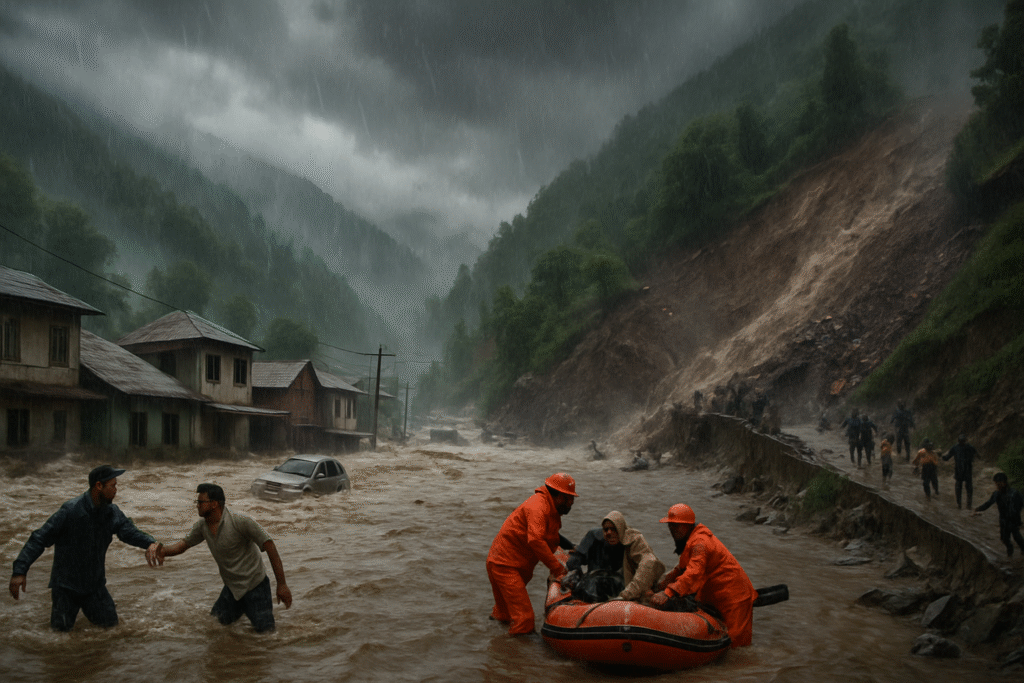
Jammu and Kashmir is grappling with a major natural disaster following unprecedented heavy rains that have unleashed catastrophic flash floods and landslides across the region. The extreme weather, including record-breaking 380mm rainfall in 24 hours in Jammu, has claimed over 130 lives, disrupted communications, and caused severe damage to critical infrastructure such as the Jammu-Srinagar National Highway. Rescue operations by the Army and civil authorities are ongoing, with thousands evacuated from isolated flood-hit areas.
One of the hardest-hit areas includes the pilgrimage route to the Vaishno Devi temple in Katra, where a massive landslide buried dozens of devotees, many still missing. The highway closure has cut off essential supply routes, while power outages and damaged telecom infrastructure have further complicated relief efforts. Authorities estimate reopening of vital roadways may take up to 25 days due to continuing rains and fresh landslides.
Chief Minister Omar Abdullah and Lieutenant Governor Manoj Sinha have visited the most affected areas to oversee relief measures and ensure swift restoration of utilities and transport. Union Home Minister Amit Shah recently visited Jammu to assess flood damage firsthand and convened meetings with key officials to coordinate central assistance and flood response.
Besides the human toll, flooding has severely impacted the economy and local communities, with schools closed due to safety concerns and many families displaced. Environmental experts caution that ongoing deforestation and unregulated infrastructure projects have worsened natural floodplain management, amplifying the disaster’s severity.
This devastating event highlights the urgent need for better disaster preparedness, climate resilience, and sustainable development practices in Jammu and Kashmir. The region remains on high alert as more rain is forecasted for September, with rescue and rehabilitation efforts continuing amid challenging conditions.







